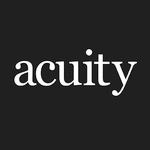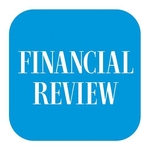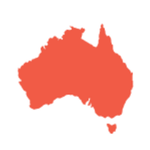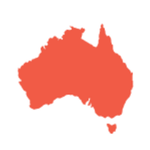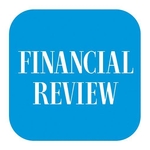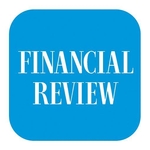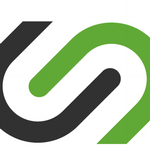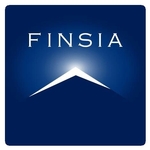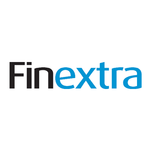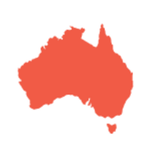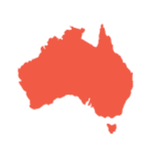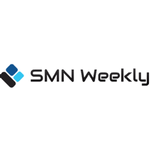OnMarket in the news
The top 10 IPOs in Australia for 2016
by Chris Pash 15 Dec 2016Move over mining companies, the tech sector is ruling the IPO market. The top performing IPOs of 2016 in Australia by share price came mainly from the technology and healthcare sectors.
Australian IPOs have returned 35.85% in 2016
by Chris Pash 07 Dec 2016IPOs have proved to be a better bet than the local Australian equities market in general in 2016. The initial public offerings returned 35.8% for the 11 months to the end of November 30, according to analysis by OnMarket BookBuilds, an app which provides access to IPOs with the same terms as institutional investors.
Fin-tech disruption threatens banks
by Adam Creighton 01 Dec 2016New opportunities to reduce the cost of business borrowing could cut swathes of profit from the traditional banking industry
FinTech Review: OnMarket Bookbuilds Investment App
by Kane Doyle 24 Nov 2016Who said you need millions of dollars of investible assets and a Financial Adviser to get access to some of Australia’s newest companies?
Smaller floats in vogue in softest IPO market since 2012
by Joyce Moullakis 21 Nov 2016Smaller floats are bucking the trend as the window for large initial public offerings has all but closed for 2016. In what is shaping up to be the quietest year for floats since 2012, many companies at the smaller end of the scale are pushing ahead with their IPO plans.
IPOs: 22 firms listed for year-end float
by Tim Boreham 19 Nov 2016Initial public offerings are finishing the year in barnstorming fashion, with a slew of listings scheduled despite the recent indifferent performance of several of the bigger floats.
Virgin deal with OnMarket to help investors earn Velocity points
by Mitchell Bingemann 16 Nov 2016Virgin Australia’s frequent-flyer business is giving retail investors the chance to earn Velocity points on the next big stock float through a new partnership with online bookbuilder OnMarket.
IPOs still the preserve of banks, brokers and wealthy investors
by Tony Boyd 02 Nov 2016It is now obvious that reform of the ASX listing rules to make the initial public offering market fair to retail investors is in the hands of the Treasurer Scott Morrison.
ASX ignores retail investors yet again
by Mike King 02 Nov 2016The ASX has utterly failed to open up the IPO market to retail investors, despite thousands pleading with the company to introduce rules to allow wider access to IPOs.
The future has arrived in Australia
by Rudi Filapek-Vandyck 13 Oct 2016In Australia, where a relatively small population in a vast geographic space has facilitated duopolies dominating markets, the arrival of new business models and challengers has been an important co-contributor to why the ASX20 has significantly underperformed the broader share market since late 2012.
Digital natives veer towards technology investments through online trading
by Alexandra Cain 12 Oct 2016The generation that has grown up with digital technologies has a preference for tech investments and trades investments from their smartphones rather than a PC or laptop. But when it comes to trading volumes, it's the baby boomers with their vast resources that are leading the investment pack.
IPOs outperform broader index, tech listings shine
by Chris Kohler 10 Oct 2016Australian initial public offerings significantly outperformed the broader sharemarket in the third quarter, with the IT sector dominating both in terms of the number of floats and returns.
5 apps to help manage your SMSF
by Jack Nicol 16 Sep 2016Australia has one of the highest levels of smartphone penetration in the world and there is an increasing array of very useful tools and apps freely available to help us manage all aspects of our financial lives.
Retail IPO access portal on potential collision course with ASX on listing requirements
by James Dunn 15 Sep 2016With its 30th initial public offering (IPO) on the slipway, and the combined total of IPOs in which it has participated now above $800 million, digital investment banking platform On-Market BookBuilds continues to build on its retail investor-oriented niche in the Australian stockbroking industry’s primary market function.
H2Ocean taps OnMarket for IPO
by Staff 14 Sep 2016H2Ocean Ltd, a company which invests in a diversified global portfolio of early and growth stage financial technology (fintech) companies, says it is delighted to be extending the reach of its Initial Public Offering (IPO) and offering shares to retail investors through fintech firm OnMarket.
August floats put in strong share performance
by Daniel Palmer 08 Sep 2016The IPO market enjoyed a healthy August, new figures show, despite several high-profile busts in recent months.
Capital flows as tiddlers head to the boards
by Tim Boreham 06 Sep 2016Coming into the third trimester of calendar 2016 there’s no sign of a pregnant pause to the flow of initial public offerings at the mainly tiddler end of the market.
Most profitable IPOs could be barred by proposed ASX rules
by Staff 30 Aug 2016When it comes to investing, many of us think that bigger is better. But when it comes to Initial Public Offerings (IPOs), the reverse may be true. Recent research by OnMarket BookBuilds reveals that of more than 1,000 IPOs that have gone through the Australian Securities Exchange (ASX) since 2005, the returns from smaller IPOs have been markedly better than those from larger ones.
Australian IPOs smashed the main market in July
by Chris Pash 16 Aug 2016The average monthly return from the nine companies listing on the ASX in July was 15.7%, about 9.4 percentage points better than ASX 200, according to the latest OnMarket IPO Report.
CMC Markets now offers access to IPOs on ASX via OnMarket's BookBuild facility
by Jeffrey Armstrong 12 Aug 2016Until recently, retail clients of online brokers were rarely able to access the primary market and take part in initial public offerings (IPOs) or other capital raisings (placements).
Proposed listing rule changes may lock small investors out of sharemarket floats
by John Collett 29 Jul 2016Martin Flood has mostly done very well out of new listings on the Australian sharemarket.
But if changes to the listing rules proposed by the Australian Securities Exchange (ASX) go through, Martin fears he may no longer be able to get access to small floats.
An alternative IPO strategy
by Bob Kohut 25 Jul 2016Despite warnings from market experts to be wary of IPO’s (Initial Public Offerings), many retail investors simply cannot resist the lure of getting in on the ground floor of something big. One factor making it easier for retail investors to throw caution to the wind is the outsized returns from some IPO’s.
5 rules for successful investing
by Tim Eisenhauer 20 Jul 2016When it comes to being a successful investor, what are the key rules that you should stick to through thick and thin?
Tech listings boost IPO Market
by Prashant Mehra 13 Jul 2016Australia's affection for tech IPO's has continued unabated.
More than a third of initial public offers on the ASX in the first half of 2016 have come from the information technology sector, according to investment technology firm OnMarket BookBuilds.
Improving access to IPOs for investors the goal of OnMarket BookBuilds
by Alexandra Cain 29 Jun 2016As the Australian Securities Exchange consults on narrowing retail investor access to floats, one business is pushing for a liberalisation of rules around mum-and-dad shareholder access to new listings on the bourse.


